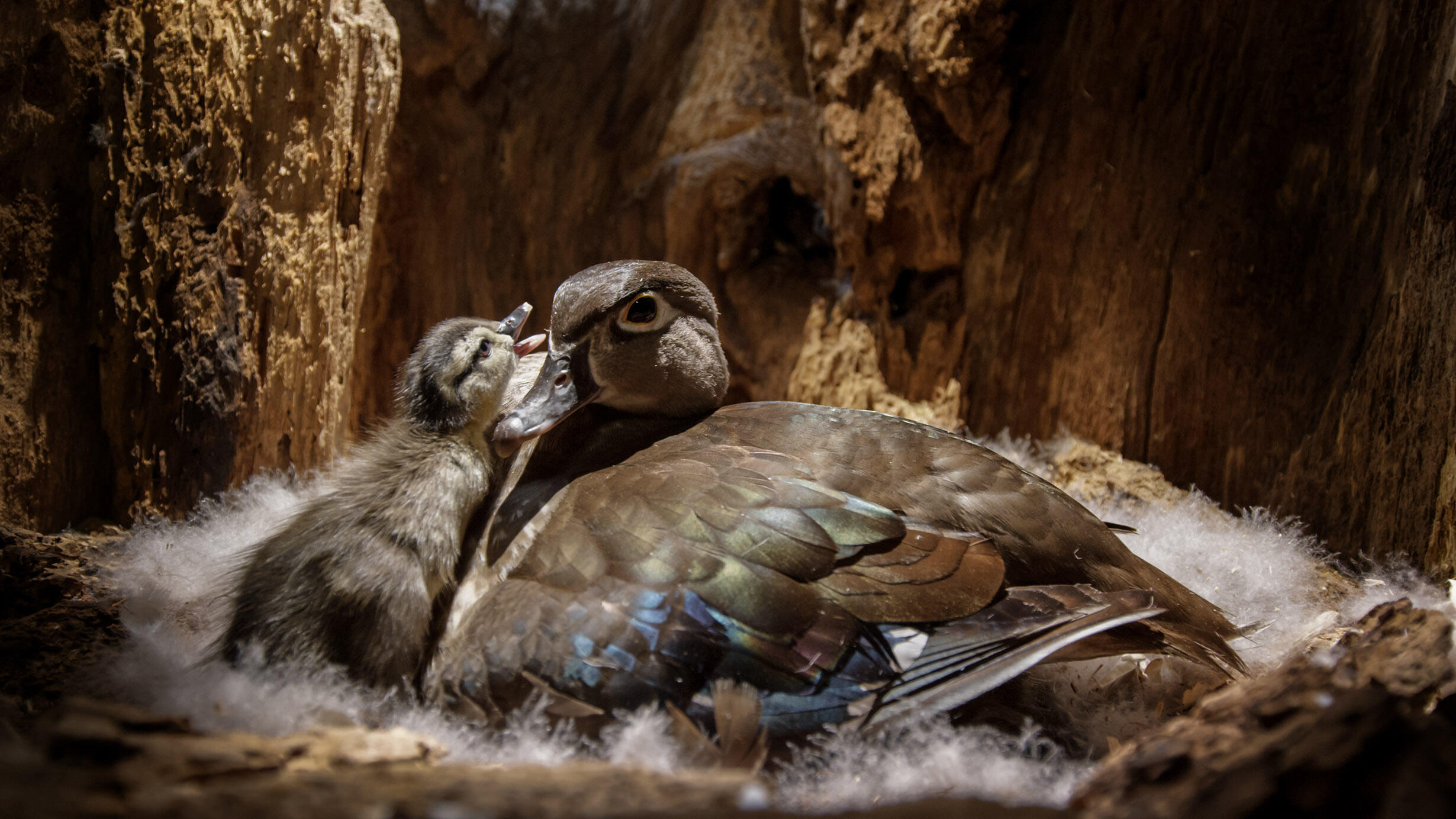 Female wood ducks look for hollow tree cavities to build their nests between the months of February and March.
Female wood ducks look for hollow tree cavities to build their nests between the months of February and March.Arise Media/Archipelago Films
Winter can be cold and unforgiving—a time when many prefer to stay bundled up inside than venture out. But life doesn’t stop for our animal neighbors during the colder months.
As you’ll see in our current giant-screen film Backyard Wilderness—screening daily in 2D and 3D in the LeFrak Theater—the coldest months are still an active time for local species such as coyotes, wood ducks, and more. And in just a few weeks, when signs of spring arrive, things will get busy even for animals that have spent their winter hibernating.
Here’s a look at what some of our animal neighbors get up to during winter, and how they’re preparing for spring.
Tree Nesters
Arise Media/Archipelago Films
Wood ducks (Aix sponsa) are year-round residents in the northeastern and eastern United States, where they typically make their homes near water. While western populations migrate south during the winter, their eastern relatives find shelter in tree cavities, where, between February and March, female birds are busy building their nests.
Come spring, fuzzy ducklings will heed their mother’s call from outside the nest to make their first journey to the water. Often, they must take a leap of faith from their cozy tree-hollow nest to the ground—or the shallows, if mom was lucky enough to find a tree near the water’s edge. But don’t worry, these ducklings bounce well!
Winter Hunters
Arise Media/Archipelago Films
For another year-long resident, the Eastern coyote (Canis latrans), winter is spent preparing for the arrival of new pups in the spring. But food sources can be very different in the snowy season than at other times of the year, and coyotes will both scavenge and hunt to survive.
Adult white-tailed deer are the most readily available prey when other, smaller mammals are busy hibernating. Coyotes that live near the suburbs will often seek out deer that have been hit by oncoming cars instead of hunting down healthy adults. But come spring, these animals will shift their sights to easy-to-catch fawns.
Read about how coyote populations have shifted to urban areas like New York City.
Spring Migrators
Arise Media/Archipelago Films
Once winter snow begins to melt, the spotted salamander (Ambystoma maculatum) is on the move. After spending winter in burrows underground, these amphibians will emerge and begin a great migration to nearby vernal pools, small seasonal bodies of water that form from melting winter runoff.
Inside these pools, salamanders will lay their eggs. There, a unique symbiotic relationship occurs between green algae in the water and the newly forming salamanders.
Watch our Shelf Life episode to find out more about the symbiotic relationship between salamanders and green algae.
To see how life changes for these animals and other local species throughout all for seasons, catch a screening of Backyard Wilderness.
[Dynamic music plays as a fawn scampers in grass. Two children look out from a deck behind a house.]
Welcome to my backyard.
[A duckling leaps from a tree, drops onto a branch, then bounces off the ground.]
Experience nature, closer than ever before.
[Slow motion of deer running in the woods. A drop of dew falls and bounces of a long leaf on which a ladybug is sitting.]
And discover that wifi
[A bee pokes into pale flower.]
is not the only connection that
[A coyote's reflection in a watery surface, as it laps water with a pink tongue. A dragonfly whizzes past as a drop hits its wings. A group of raccoons runs on a log, with one almost falling off.]
Step outside...
[Aerial view of two people walking under a forest canopy.]
...into "Backyard Wilderness."
[A blue bird bathes in a bird bath next to a house. Title reads: "Backyard Wilderness."]